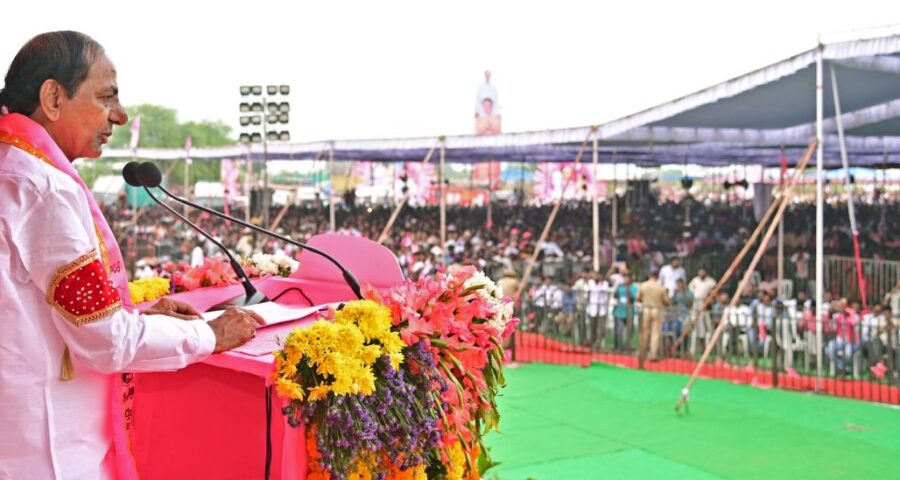The situation raises concerns about whether the promised freebies will once again push the state into a revenue deficit.
Political parties are making promises of freebies in Telangana, similar to those in the other four poll-bound states.
However, there is a crucial difference between Telangana and other states: The former is the strongest financially in terms of tax revenues and can readily afford these freebies.
For the past seven years, the state’s own tax revenue has accounted for over 60 per cent of its total revenue receipts, including projections for 2022-2023 and 2023-2024.
Despite this financial strength, Telangana experienced a revenue deficit in the first three years of the second term of Chief Minister Kalvakuntla Chandrashekar Rao’s government.
In contrast, during the initial tenure of the Telangana Rashtra Samithi (now changed to Bharat Rashtra Samithi, or BRS) rule, the state consistently maintained a revenue surplus.
In its revised projections for 2022-2023, the state had anticipated a revenue surplus of 0.2 per cent of the gross state domestic product (GSDP).
However, it exceeded expectations by achieving a revenue surplus of 0.5 per cent of GSDP, according to data obtained from the Comptroller and Auditor General of India and the ministry of statistics and programme implementation.
This situation raises concerns about whether the promised freebies will once again push the state into a revenue deficit.
The ruling BRS has pledged to increase assistance under the Rythu Bandhu Scheme to Rs 16,000 from the current Rs 10,000 per year for every farmer, provide life insurance coverage of Rs 5 lakh to every below-poverty line family, similar to the Rythu Bima provided to farmers, and offer a monthly honorarium of Rs 3,000 per eligible woman under the Saubhagya Laxmi Scheme, among other commitments.
Similarly, the Congress has promised six guarantees, including its own minimum income support scheme for farmers, YSR (Yeduguri Sandinti Jagan Mohan Reddy) Rythu Bharosa, which would provide Rs 15,000 annually to every farmer, monthly financial assistance of Rs 2,500, gas cylinders at Rs 500, free travel for women on state-run buses throughout the state, Rs 12,000 for every agricultural labourer annually, and a Rs 500 bonus for paddy crops.
Despite robust tax receipts, Telangana’s spending on capital outlays has been relatively modest, accounting for less than 20 per cent of total expenditure for the past decade.
Projections indicate that these outlays are expected to be around 12 per cent and 13.5 per cent for 2022-2023 (Revised Estimates) and 2023-2024 (Budget Estimates), respectively.
The promised freebies would further shrink this allocation.
While the state’s debt-to-GSDP ratio remains quite modest, it has risen above 20 per cent since 2017-2018, up from less than 20 per cent in the previous three years.
Unemployment in the state consistently exceeds the national average, as indicated by data from the Periodic Labour Force Survey (PLFS).
This is the case even though PLFS does not reveal disguised unemployment.
To address this issue, the state needs to invest in capital outlays and schemes that can enhance the employability of its people.
Additionally, Telangana should allocate more resources to education, as its literacy rate is lower than the all-India average, though still moderate.
In 2022-2023, the state’s literacy rate stood at 79.2 per cent, compared to 80.3 per cent at the all-India level, according to PLFS.
Among these figures, the female literacy rate was 73.2 per cent, as opposed to 74.2 per cent at the national level.
The unemployment level in Telangana is moderately higher than the national level, despite the state having the third-largest per capita income in 2022-2023, after Delhi and Sikkim (Goa’s numbers are yet to be released).
Telangana’s per capita income has consistently exceeded the all-India average since its formation in June 2014.
In fact, during 2022-2023, its per capita income exceeded the national average by over 80 per cent, compared to 43 per cent when the state was first formed.
In 2023-24, the state allocated only 7.6 per cent of its expenditure to education, which is less than the average allocation of 14.8 per cent for education by states during 2022-23, as reported by PRS Legislative Research.
Retail inflation in the state has mostly been higher than the all-India average since its formation.
In the first six months of the current financial year, it stood at 6.52 per cent in the state, compared to 5.53 per cent nationwide.
While the inflation rate cooled down to 5.02 per cent at the all-India level in September, it remained at 6.05 per cent in the state.
Feature Presentation: Aslam Hunani/Rediff.com
Source: Read Full Article


